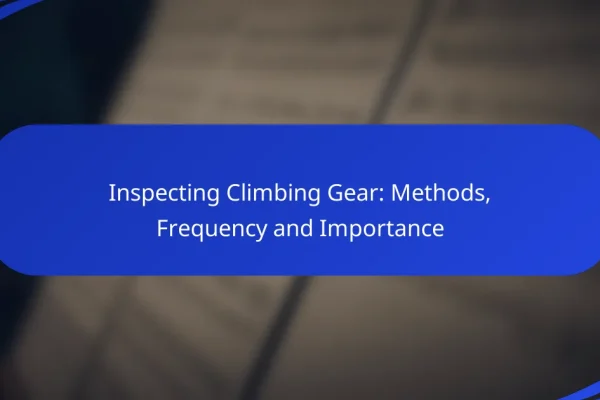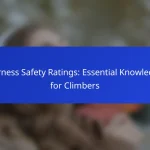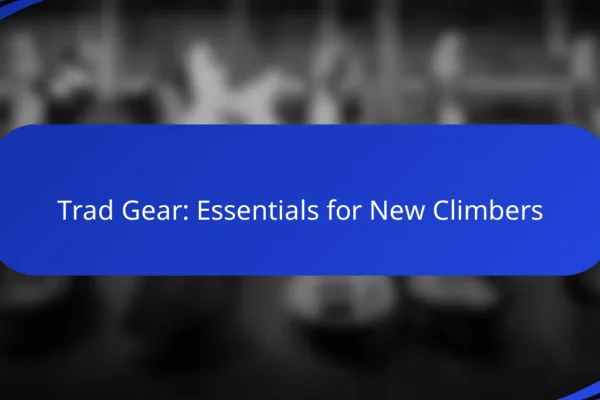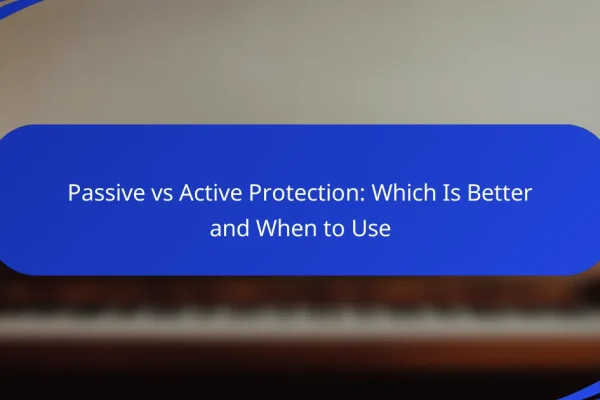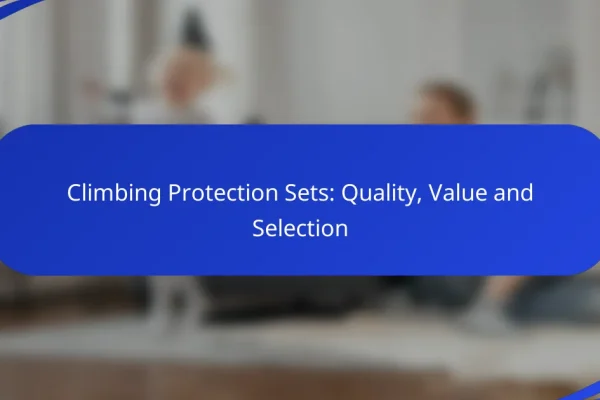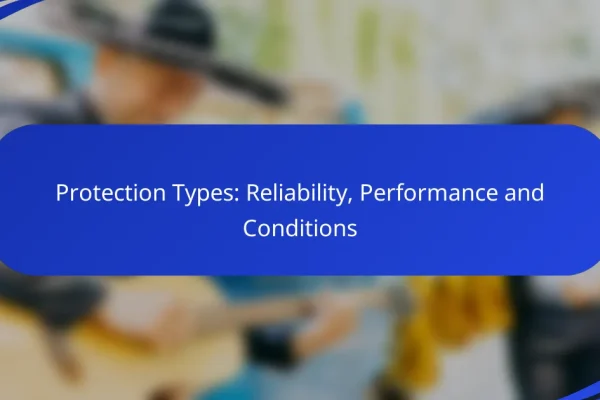What are the best climbing protection options?
The best climbing protection options include camming devices, passive protection, bolts and anchors, and hybrid systems. Each type has unique features and considerations that cater to different climbing scenarios and preferences.
Camming devices
Camming devices, or cams, are versatile pieces of gear that expand to fit cracks in rock. They provide excellent holding power and are suitable for a variety of placements, making them ideal for traditional climbing. When choosing cams, consider the range of sizes available, as having a selection can enhance your protection options.
It’s important to ensure that the cam’s trigger mechanism is smooth and reliable. Regularly inspect your gear for wear and tear to maintain safety during climbs.
Passive protection
Passive protection includes nuts and hexes that rely on wedging into cracks without moving parts. These devices are generally lighter and can be more cost-effective than camming devices. However, they require more skill to place correctly, as they depend on the rock’s features for stability.
When using passive protection, familiarize yourself with different placements and practice using them in various rock types. This will enhance your ability to assess when and where to use them effectively.
Bolts and anchors
Bolts and anchors are fixed protection points that provide reliable security on sport climbs and in areas where natural protection is scarce. Bolts are typically made of steel and are drilled into the rock, while anchors can include chains or rings for belaying and rappelling.
Always check the condition of bolts and anchors before use, as they can degrade over time. Familiarize yourself with local climbing regulations regarding the placement and use of fixed protection to ensure compliance and safety.
Hybrid systems
Hybrid systems combine elements of both active and passive protection, offering climbers flexibility in various situations. For example, using a combination of cams and nuts can provide a more comprehensive safety net on a route with varying crack sizes.
When employing hybrid systems, assess the rock features and your climbing style to determine the best mix of protection types. This approach can enhance your confidence and safety on challenging climbs.
Top brands: Black Diamond, Petzl
Black Diamond and Petzl are two leading brands in climbing protection, known for their high-quality gear and innovative designs. Black Diamond offers a wide range of camming devices and passive protection, while Petzl is renowned for its harnesses and anchors.
When selecting gear from these brands, consider your specific climbing needs and preferences. Both companies provide detailed specifications and user reviews, which can help guide your purchasing decisions.
How to choose climbing protection for different routes?
Selecting the right climbing protection depends on the type of climbing route you plan to tackle. Each climbing style has unique requirements that influence the gear you should use, ensuring safety and efficiency on the rock.
Sport climbing considerations
In sport climbing, the routes are typically equipped with fixed anchors, which simplifies the protection choices. You mainly need quickdraws to connect your rope to the bolts already placed on the route.
When selecting quickdraws, consider their length and weight. Shorter quickdraws are suitable for vertical climbs, while longer ones can help reduce rope drag on traverses. Ensure that the carabiners are easy to clip and have a locking mechanism for added safety.
Trad climbing considerations
Trad climbing requires placing your own gear, such as nuts and cams, into cracks and features in the rock. The key is to assess the rock type and route characteristics to choose the appropriate gear.
For a typical route, carry a range of sizes in your rack, from small nuts for thin cracks to larger cams for wider placements. Familiarize yourself with the gear’s placement techniques and practice building anchors to ensure a secure setup.
Multi-pitch climbing considerations
Multi-pitch climbing combines elements of both sport and trad climbing, requiring a mix of fixed protection and gear you place yourself. It’s crucial to plan your gear based on the pitches you will encounter.
Consider using a combination of quickdraws and trad gear, and ensure you have enough gear for belaying and rappelling. A lightweight harness and a good selection of slings can help manage weight while maintaining safety across multiple pitches.
What are the safety ratings for climbing protection?
Safety ratings for climbing protection indicate the reliability and strength of gear used in climbing. These ratings help climbers choose appropriate equipment that meets established safety standards, ensuring better protection during climbs.
UIAA standards
The UIAA (International Climbing and Mountaineering Federation) sets safety standards for climbing equipment, focusing on durability and performance under stress. Gear that meets UIAA standards has undergone rigorous testing to ensure it can withstand specific loads and conditions.
For example, a UIAA-approved climbing harness must support a minimum weight while maintaining integrity during dynamic falls. This standardization helps climbers trust that their gear will perform as expected in critical situations.
CE certification
CE certification indicates that climbing protection complies with European safety regulations. This certification is crucial for gear sold in Europe, ensuring that it meets safety and performance benchmarks set by the European Union.
Climbing gear with CE certification typically undergoes tests similar to those for UIAA standards, but the focus is on compliance with EU directives. This means that climbers in Europe can be confident that certified equipment has been evaluated for safety and reliability.
Testing methods
Testing methods for climbing protection involve various procedures to assess strength, durability, and performance. Common tests include static and dynamic load tests, where equipment is subjected to forces that simulate real climbing scenarios.
For instance, dynamic tests measure how gear behaves under sudden loads, like a fall, while static tests evaluate how much weight the gear can hold without breaking. Understanding these methods helps climbers make informed decisions about the gear they choose.
What is the price range for climbing protection gear?
The price range for climbing protection gear varies significantly based on the type and quality of the equipment. Generally, you can expect to spend anywhere from around $10 to over $200 for individual pieces, depending on whether you choose budget, mid-range, or high-end options.
Budget options
Budget climbing protection gear typically costs between $10 and $50 per item. These options are suitable for beginners or occasional climbers who need basic equipment without a hefty investment. Common budget items include carabiners, basic slings, and simple protection devices like nuts or hexes.
While budget gear can be functional, it’s essential to check for safety certifications and user reviews. Look for brands that are known for reliability even in lower price ranges to ensure you are not compromising safety.
Mid-range options
Mid-range climbing protection gear usually falls within the $50 to $150 range. This category includes more durable and reliable equipment, such as higher-quality carabiners, cams, and quickdraws. These items often feature improved materials and designs that enhance safety and usability.
Investing in mid-range gear is advisable for regular climbers who want a balance between cost and performance. Brands in this range often offer gear that meets industry safety standards while providing better longevity and functionality.
High-end options
High-end climbing protection gear can cost $150 and above, with some specialized items exceeding $300. This gear is designed for serious climbers who demand the best performance, durability, and safety features. Examples include advanced camming devices, lightweight titanium carabiners, and specialized climbing protection systems.
When considering high-end options, look for features such as weight-saving designs, enhanced strength ratings, and innovative materials. While the initial investment is higher, the longevity and performance can justify the cost for dedicated climbers.
What are the maintenance tips for climbing protection?
Maintaining climbing protection is essential for ensuring safety and reliability during climbs. Regular cleaning, inspection, and proper storage can significantly extend the lifespan of gear like carabiners, slings, and protection devices.
Cleaning techniques
Cleaning climbing protection involves removing dirt, grime, and salt that can accumulate during use. For metal gear, use a soft brush and warm, soapy water to scrub off any debris, then rinse thoroughly and dry completely to prevent rust. For textile gear like slings, hand wash with mild soap and air dry away from direct sunlight.
Avoid using harsh chemicals or solvents, as they can degrade materials. Regular cleaning after each climbing trip is recommended, especially if you’ve been in sandy or salty environments.
Inspection guidelines
Regular inspection of climbing protection is crucial for identifying wear and tear. Check for signs of corrosion, cracks, or deformation in metal gear, and inspect textile gear for fraying, cuts, or discoloration. A good practice is to conduct a visual inspection before each use and a more thorough check every few months.
Follow manufacturer guidelines for lifespan and replacement intervals, as some gear may need to be retired after a certain number of falls or years of use. If in doubt, err on the side of caution and replace any gear that shows significant wear.
